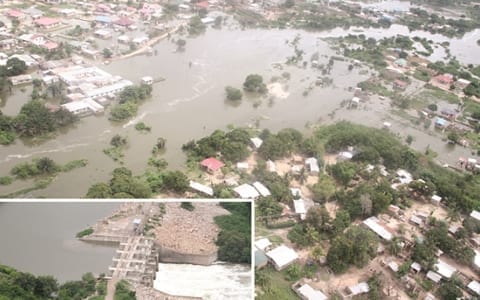Flooding and other natural disasters can pose significant risks to communities, especially those located in areas prone to such events. Akosombo, a town in Ghana, is known for its susceptibility to flooding due to its proximity to the Volta River and the Akosombo Dam.
As a result, there has been a growing concern about the safety and well-being of the residents in this area. Relocating these residents to safer locations is a complex and critical issue that requires careful planning and consideration of various factors.
Understanding the Risks
The first step in addressing the issue of relocating residents in Akosombo prone to flooding and disaster is to understand the specific risks they face. Flooding can result from heavy rainfall, dam overflow, or a combination of both factors. In the case of Akosombo, the presence of the Volta River and the Akosombo Dam increases the likelihood of flooding during periods of intense rainfall or dam discharge. Additionally, the town’s topography and infrastructure may exacerbate the impact of flooding, putting residents at risk of property damage, displacement, and even loss of life.
Challenges Faced by Residents
Residents in flood-prone areas such as Akosombo encounter numerous challenges that affect their daily lives and overall well-being. These challenges include the constant threat of flooding, damage to homes and property, disruption of essential services such as water and electricity, health risks due to contaminated water and sanitation issues, and limited access to emergency assistance during disasters. Moreover, the psychological toll of living in constant fear of flooding can have long-term effects on mental health and community resilience.
Planning for Relocation
Relocating residents from flood-prone areas requires a comprehensive approach that addresses both immediate needs and long-term sustainability. The process involves identifying suitable relocation sites that are safe from flooding and other hazards, ensuring access to essential services such as healthcare, education, and employment opportunities, as well as providing support for community integration and adaptation.
Furthermore, engaging with local stakeholders, including residents, community leaders, government agencies, and non-governmental organizations is crucial for developing effective relocation plans that take into account the unique needs and preferences of the affected population.
Sustainable Development and Resilience
In addition to relocating residents to safer areas, it is essential to focus on sustainable development and resilience-building measures. This includes implementing infrastructure improvements such as flood barriers, early warning systems, sustainable urban planning practices, and promoting environmental conservation to mitigate future flood risks. Investing in education and training programs on disaster preparedness and response can empower communities to better cope with potential hazards while fostering a culture of resilience.
By Eva Boamah







![[VIDEO] Agya Koo celebrates like Cristiano Ronaldo after scoring penalty](https://ghananewss.com/storage/2023/02/BeFunky-collage-2023-02-17T164545.706-scaled-100x75.jpg)







